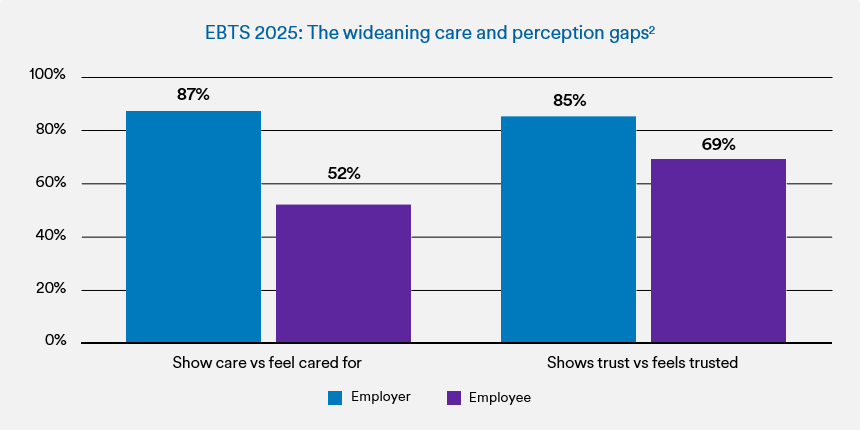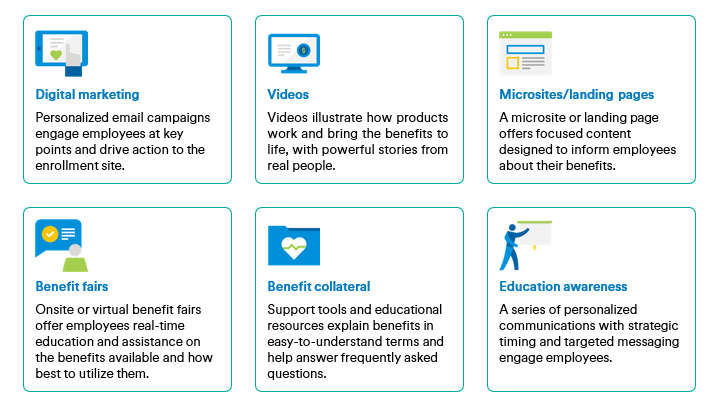Communication Strategies for PEOs
How proactive communication encourages talent retention and builds trust
Small businesses supported by PEOs are proven to be more effective at retaining employees compared to businesses that don’t1. How can PEOs continue their retention streak in the face of declining employee well-being, rising market volatility, and job insecurity?
Employee well-being has reached a five-year low, with the MetLife 2025 Employee Benefits Trends Study (EBTS) finding only 39%2 of employees feel healthy across physical, social, mental, and financial dimensions. Mental and financial health saw the sharpest declines, each dropping 8 percentage points year-on-year2.This trend disproportionately affects small businesses, where only 67%3 of employees report job satisfaction (compared to 75% at mid-sized firms3), and three in 10 plan to leave within the year3.
This precarious situation is mirrored by growing perception gaps regarding care and trust, as highlighted in EBTS 2025. While 87%2 of employers believe they demonstrate care, only 52%2 of employees agree, a gap that widened by 25% from the previous year2. Similarly, a 16-percentage point difference exists between employers who feel they trust employees and employees who feel trusted2.
The good news is that we know what it takes to build trust with employees. Open and honest communication tops the list (55% of employees agree2), followed by recognizing good work (47%2) and keeping promises (43%2). For PEOs, improving communication on HR policies and benefits can make a big difference because the more employees understand and use their benefits, the more likely they are to feel good about their well-being and their work.
Communicating beyond open enrollment
It’s not uncommon for many employees (and employers) to stop thinking about benefits as soon as open enrollment ends. But as we’ve seen above, it takes constant communication for employees to appreciate those benefits, which is why we frequently work with PEOs to develop multitouch, multichannel campaigns. Our data shows that having more than four ancillary touchpoints can significantly increase employee engagement4. These can include:
These campaigns are co-branded to feature the PEO’s name and logo and personalized to each PEO based on their enrollment status, products offered, and many more factors. What’s more, MetLife sends PEOs seasonal, wellness-focused content year-round to support their outreach efforts. This may include a guide to preparing for a tax audit in March, a guide to buying a home in June, and a will preparation guide in August—all of which tie into a MetLife benefit.
PEOs can take advantage of seasonal content year around to maximize worksite employee engagement
Best of all, you don’t have to do this alone. MetLife clients have access to a dedicated Communications and Engagement Lead who can develop a customized communications plan that leverages research-based insights to address the unique needs of worksite employees.
Your Communications and Engagement Lead will ensure your employee communications reflect your company’s values, use data on employee demographics and work locations to address individual needs, and produce the required materials for all your preferred channels. Their goal is to support your worksite employees before and after enrollment, helping them make the most of their benefits and fostering the transparency and trust they expect.
Most small businesses simply do not have the resources to produce a multichannel campaign as seen here, but with MetLife’s help, you can help your clients take benefits communication to the next level.



